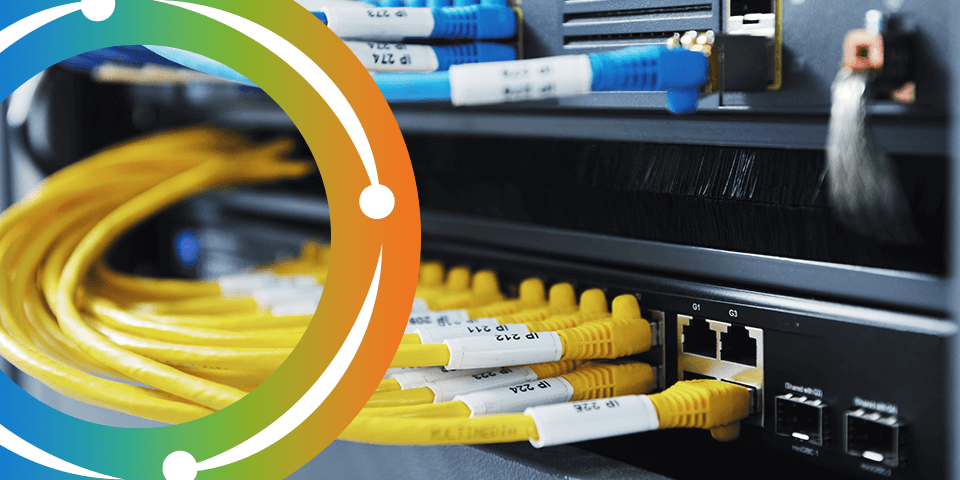[4 min. read]
Businesses need IT to function optimally, regardless of size, industry or scope. Successful IT support is essential for companies to run, expand and maintain operational best practices. IT support services perform many mission-critical functions, from addressing technology-based challenges to writing complex software.
Onsite IT and remote options have benefits, but which is best for your business? In many ways, the answer depends on your business requirements. Further examination of each IT support option in more detail is vital to understand the differences between onsite IT vs. remote and which would be a better fit.
What Is Onsite IT Support?
Onsite IT support solutions involve professional IT personnel offering you services on your business’s physical premises. This support can be provided by the company’s employees or outsourced to a specialized IT service provider. Both permanent and temporary options are available depending on business requirements.
Permanent options provide network, hardware and software support and immediate troubleshooting. Temporary onsite IT support provides in-person availability in a problem-solving capacity. Both allow your technology partner to become familiar with your software and business requirements, which can be beneficial in the long term.
What Is Remote IT Support?
Remote IT helpdesk support doesn’t require anyone in your physical office space. Instead, many operational processes run in the cloud, including cybersecurity, full disaster recovery and cloud-hosted IT infrastructure. Remote IT support services cater to multiple businesses from their headquarters and can deal with most challenges from their own space.
IT technicians can access your business computers and other devices remotely, so they can see the screen of the remote device on their computer, diagnose problems and even take control of the remote device to troubleshoot and provide solutions. Technicians have access in real-time using specialized software. Although you might not come face-to-face with your IT support personnel, they can still provide an efficient and effective service to your business.
Onsite IT Support Benefits and Disadvantages
There are many benefits of onsite IT, but it may only suit specific business needs. To examine whether onsite IT could be a good fit for your business, consider the following advantages and disadvantages:
Benefits of Onsite IT Support
Many businesses find onsite IT support highly beneficial. Some of the reasons companies choose to adopt this model include the following:
- Immediate problem-solving: Onsite IT professionals in the physical building can help you and your staff solve problems as they arise. Onsite technicians can also diagnose and assist in fixing hardware on your premises.
- Personalized attention: Onsite IT support providers are there to work face-to-face with you to learn how to use your systems and help you solve problems. Over time, they become familiar with your operations and company culture, creating a personalized partnership rather than a simple business transaction.
- Preventive approach: Onsite technicians help to streamline your systems and keep them running. They take a preventative approach, and because they’re on the premises, they can address problems in the early stages and address them before they become significant issues.
- Rapid and efficient communication: Only some people are technologically proficient enough to describe IT problems via email or phone. Onsite support helps avoid miscommunications, as technicians have immediate access to the problem. Since they can see it for themselves, they can often troubleshoot faster without mixed messages.
- Improved internal relationships: People in your premises get to know one another, which leads to stronger interpersonal relationships and better problem-solving. Your employees trust IT support personnel and are less likely to foster adversarial relationships.
Disadvantages of Onsite IT Support
Onsite IT support has disadvantages, which you might have to consider. Some disadvantages include the following:
- Higher cost to the company: Onsite IT support requires more time, which drives up the cost of having someone on your premises. If you need a full-time solution, your business must account for paying salaries. Depending on your budget, a salary expense could limit your hiring pool.
- Extensive infrastructural needs: Depending on your business needs and expectations, you might need to provide the infrastructure for your onsite IT team. You’ll shoulder the expense of servers, hardware, tools and storage space. A setup like this may come with prohibitive costs.
- Limited availability: Onsite IT technicians often work regular office hours, so if a problem arises outside of these hours, your business may have to wait for your technician. If your company employs a technician on a part-time or freelance basis, they might need more time to be able to rush over to your premises, so it takes longer for them to address your problem.
- Finite expertise: Individual expertise can be limiting, as opposed to an entire team of remote technicians, each with their specialized skills.
Remote IT Support Benefits and Disadvantages
Remote IT support has many benefits and gives business leaders a different approach to IT needs. Examine these pros and cons to discover whether remote support might be a better fit:
Advantages of Remote IT Support
The choice to go with remote support has many business benefits, including the following:
- Rapid resolutions: Remote technicians can access your system remotely wherever they are, which can mean quicker turnaround times when troubleshooting.
- Cost-effective support: Quicker responses can save your company money. You can choose from the services they provide and pay for those without the responsibility of adding staff to your payroll or paying for technicians to travel to your location.
- Reduced infrastructural demands: Remote help desk technicians work from their office or home. They have their hardware and infrastructure, which is more cost-effective for your business as you don’t have to provide them with the tools they need to operate.
- Unlimited availability: Help desk services often offer 24/7 availability. They can deal with your problems as they arise, even on weekends and public holidays. Constant availability is excellent for keeping you operational, protecting your data and reacting quickly in case of a breach.
- Geographical freedom: Remote teams can be based anywhere and service businesses in multiple locations. If you have offices in two different states, for example, the same service provider could support both.
- Enhanced data access: With remote access, your IT support team can give you immediate access to your data at any time.
- Elevated maintenance: Your team will regularly update, maintain and check your system for weaknesses and offer preventive care, providing you with access to the latest technologies and up-to-date data protection.
Disadvantages of Remote IT Support
Depending on your customer service requirements, your employees could find remote support less comforting than having someone on your premises. Some disadvantages of remote support include the following:
- Restricted attention: Remote companies might service multiple businesses, so you won’t get the same undivided attention as you would from an onsite team. Ensure any remote IT provider has the staff to support your needs.
- Minimal support for hardware problems: Although some remote services offer hardware solutions, this service is limited by geography. If your business encounters an issue with the physical hardware in the building, you might have to outsource a separate provider to address the issue.
- Ambiguous costs: Your business may need various services with varied costs, making remote support more challenging to budget effectively.
Find the Best Support for Your Business With Morefield
Many small to medium businesses need more resources to devote to a complete IT support team. With over 70 years in the business, Morefield can help you select your IT solution based on your business needs. Morefield will help your business make smart technology decisions from the consulting phase — providing valuable input to companies that don’t have a dedicated IT service provider — to the implementation phase, designing and maintaining solutions to your IT and regulatory compliance challenges.
Please connect with us today to learn more about how we can provide you with dedicated and solution-focused IT alternatives.









